We woke up rather early (around 6 am) to fairly heavy rain, and were glad that we hadn’t planned anything for our last morning in Brussels. We did decide to use the time to find a nearby laundromat and do some laundry, because we’d run out of our long sleeves and will clearly still need them for a while. Then we checked out of our underwhelming hotel and walked the half-mile to the nearest train station, Brussels-Midi. We grabbed a quick sandwich for an early lunch, had a bit of a wait for a train that was about 15 minutes late, and then we were on our way from Brussels to Blankenberge, a resort town on the Atlantic coast, in the Flemish part of Belgium. This is the spot my sister Judith and her spouse Micheal picked for our 5 days of joint vacation, based on the fact that they came here in 2022 for a brief stay in the off-season (November) and thought it would be fun to explore it some more with us at a better time of year.
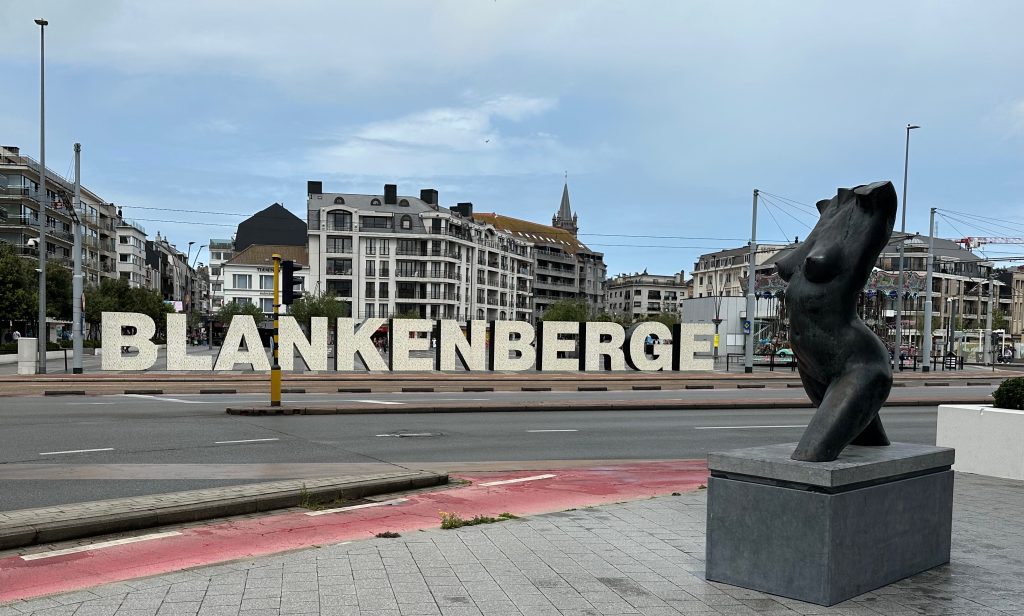
We arrived just before 1 pm and thought we wouldn’t be able to check into our hotel room, but the staff at this gem of an old Belle Epoque hotel was super nice and let us check in. We got two sweet rooms with mini balconies, chandeliers (!) and a view of the main street, and since it was going to be another couple of hours until Judith and Michael would arrive, we just unpacked our things and then took the 200-yard/meter walk to the beach promenade and on to the beach. It was (as always) wonderful to see the ocean, but it was also super windy. But although the sky looked awfully dark for a bit, it did not rain and we spent a while walking up and down the beach, the pier, and the promenade, and then back through the main shopping streets back to our hotel.
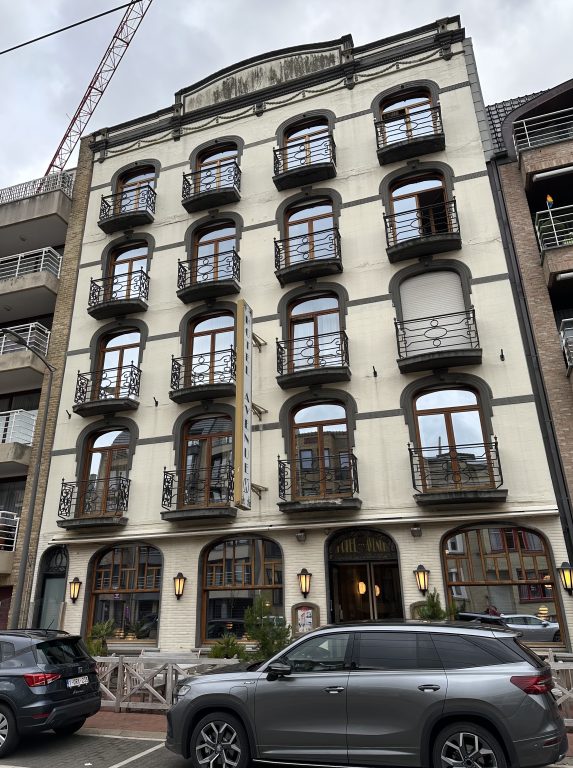

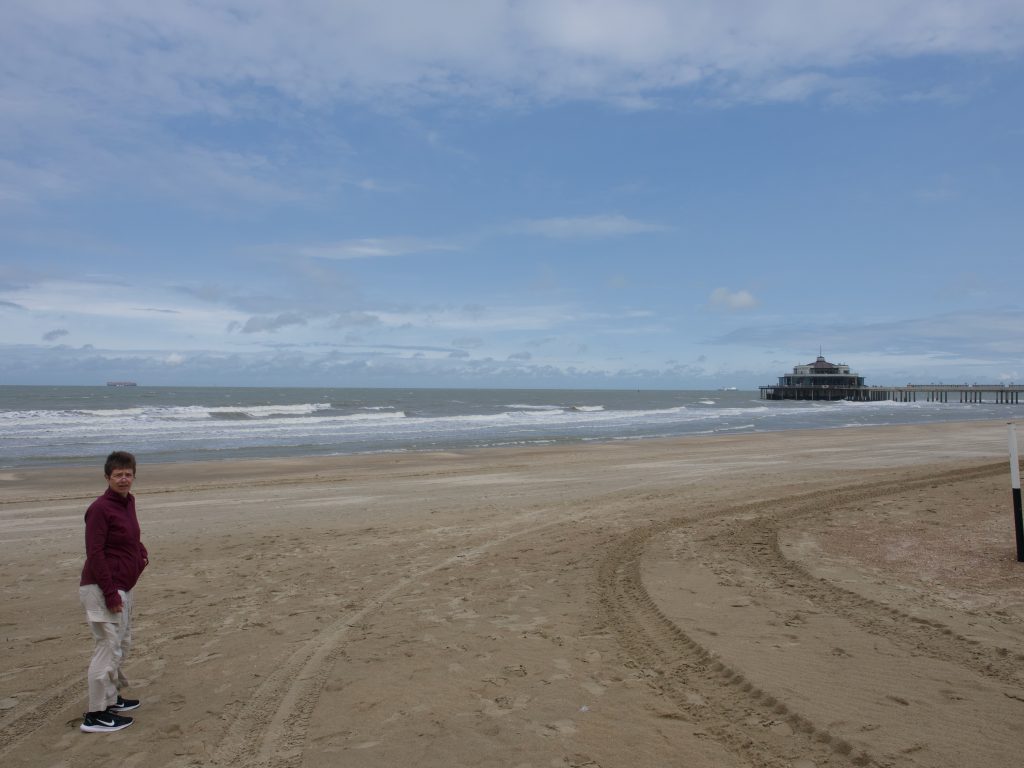
We are slowly adjusting to this absolutely incongruent town. The beach is wide and packed with themed beach areas that tend to have a bar, a bunch of beach chairs, bouncy castles and playgrounds of various sorts (one is a giant shark); behind it is a modern promenade with many restaurants that are indoor/outdoor (behind glass that keeps the wind away), and a massive wall of multi-story modern condos and hotels that stretches along the promenade for a couple of miles at least. Occasionally, an older 3-story building is squeezed in between these, and there are also a couple of art deco buildings from the late 1920s. But the entire Wall of Beach Condos blocks off the second and third row of older 3-story town homes, small hotels, and old-fashioned resort rentals that once upon a time had a view of the beach. Among these, there are many beautiful art nouveau/belle epoque gems from the early 20th century, like our own hotel (we’ll go back and take some more photos of these when we’ve had time to study them up close). The contrast is quite stark!
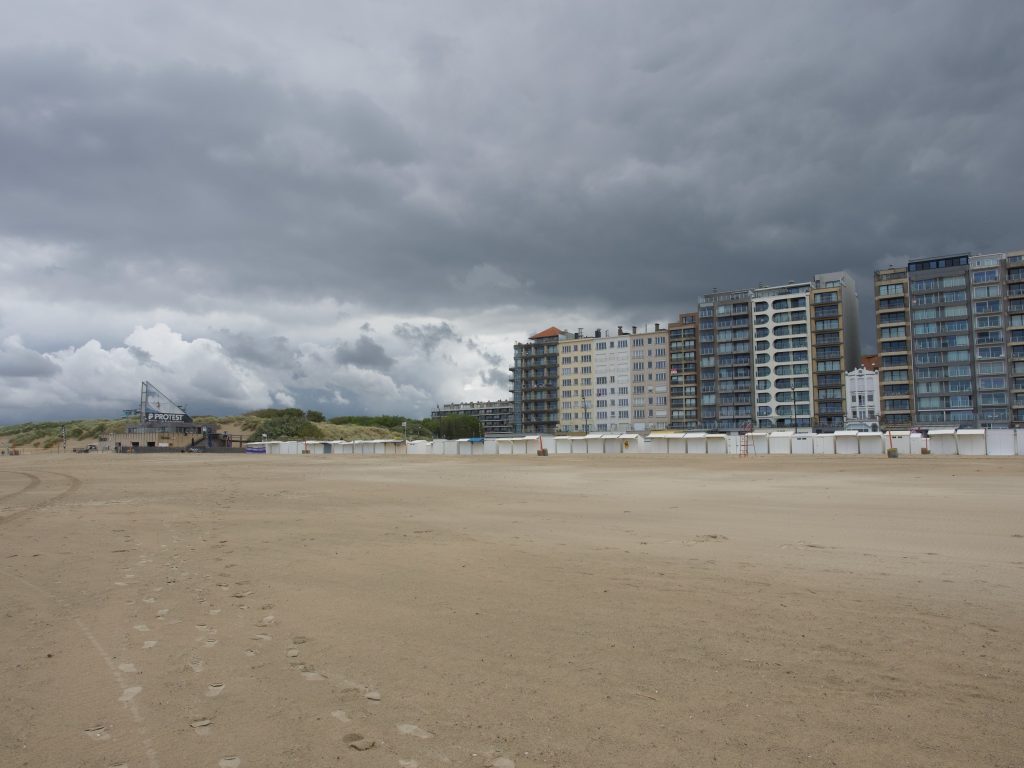
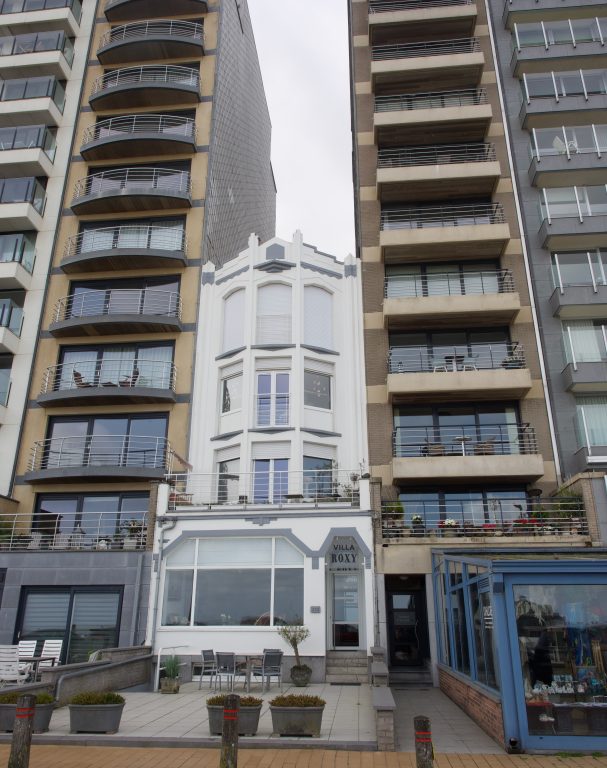
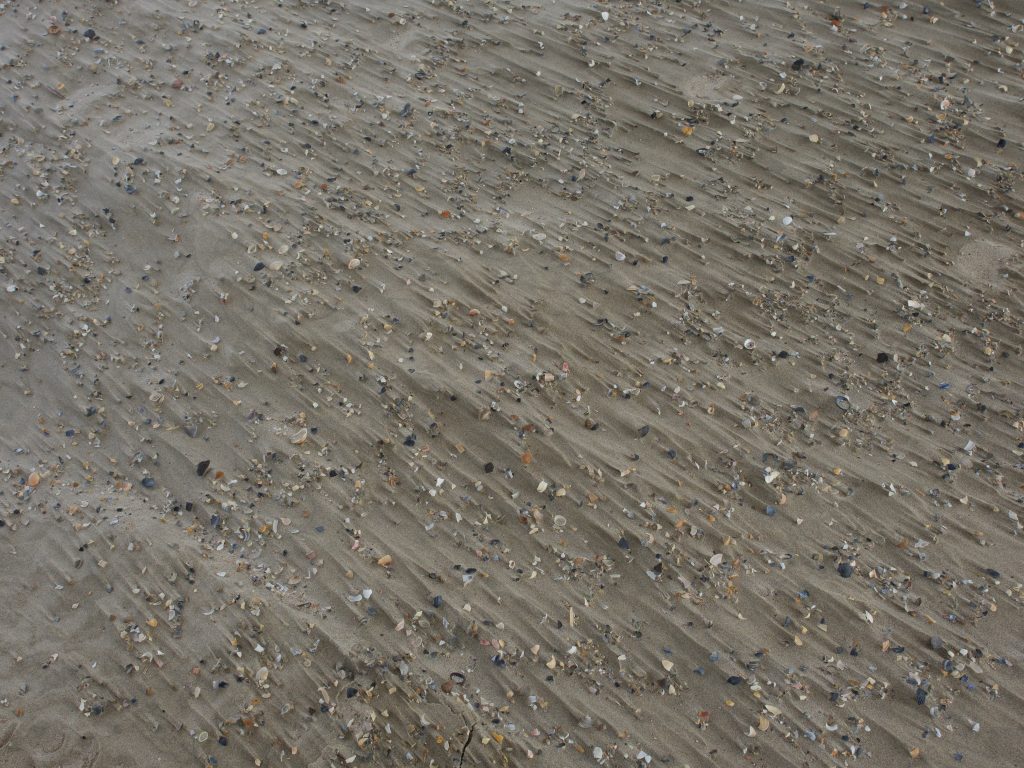
After Judith and Michael arrived and had unloaded their luggage from their car after an 8+ hour drive from Northern Germany, we took the car to the outskirts of town, where parking is free, and walked back the two miles along the beach, watching kite surfers and the effect of the wind on them and on the sand blowing along the beach. It was close to low tide, so there were also fun tide pools and we had a good time just being at the waterfront. Judith had brought lemon cake and instant coffee from home and we had a wonderful coffee/tea break in our room (the bigger of the two, so we can all fit around a little side table that we’ve made into our ad-hoc dinner table–unlike the previous place, this one is not set up for meals in the room; there is not even a dorm fridge or a coffee maker). Then we took off again, for a different part of town, where we bought a few simple groceries at the ALDI, including some ready-made salads and fresh rolls. On the way back, we saw the little sailboat harbor and walked along the other half of the promenade, trying to guess the age of some of the buildings, including a casino from the 1930s that is in a bit of a rundown state.
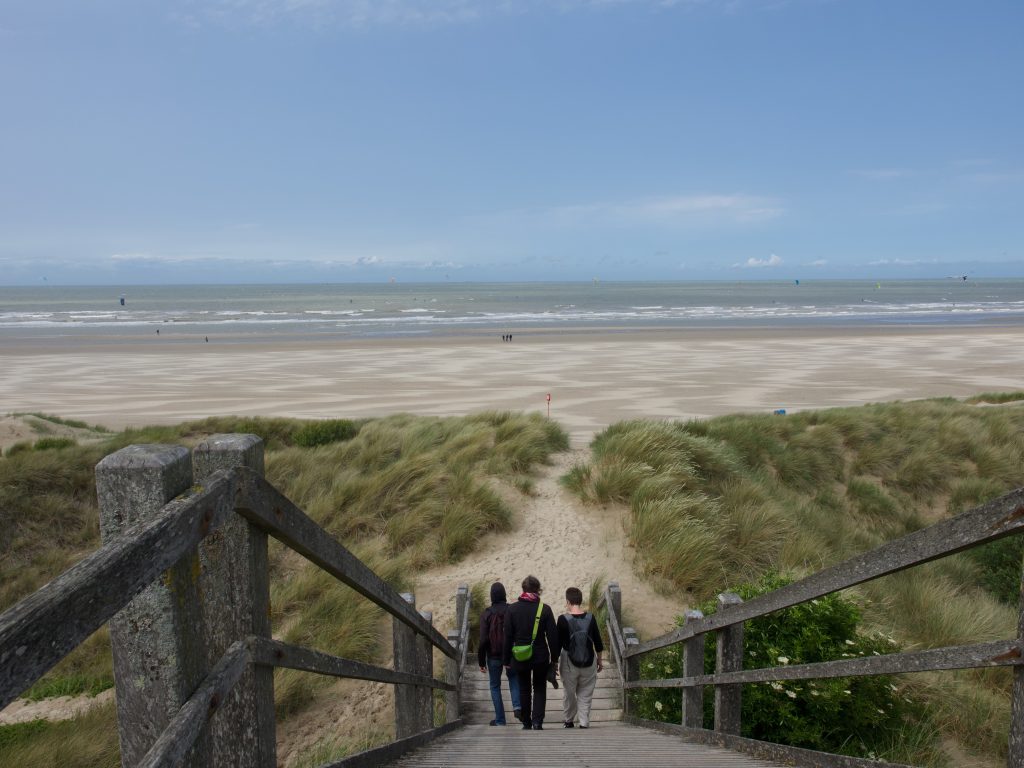
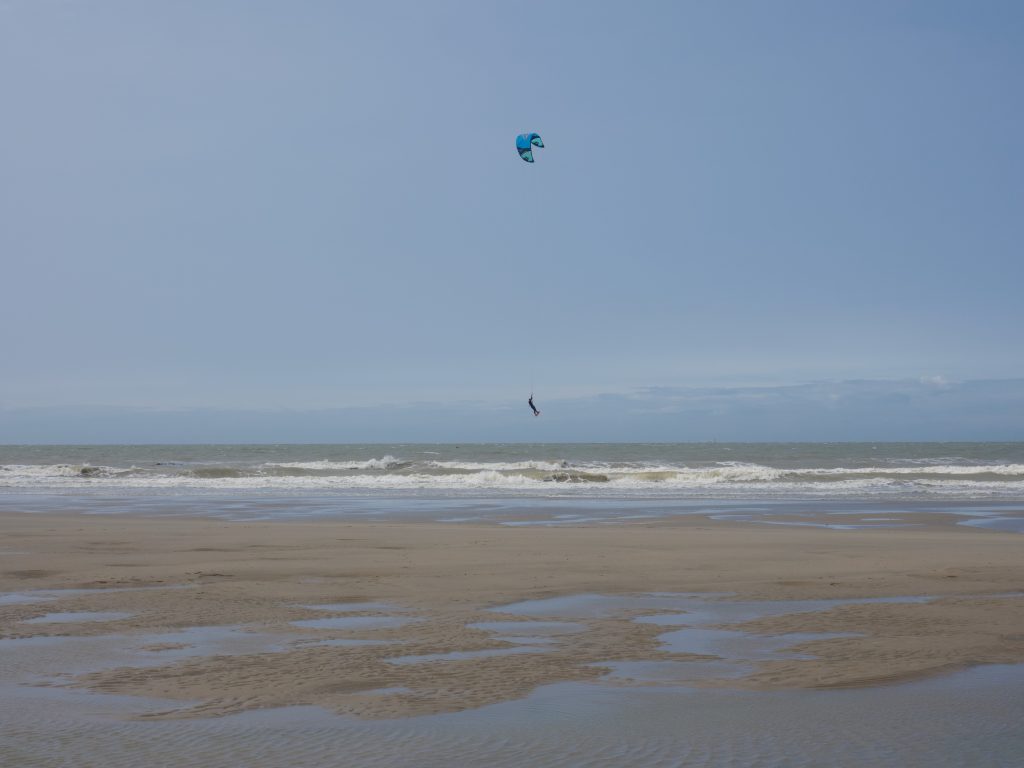
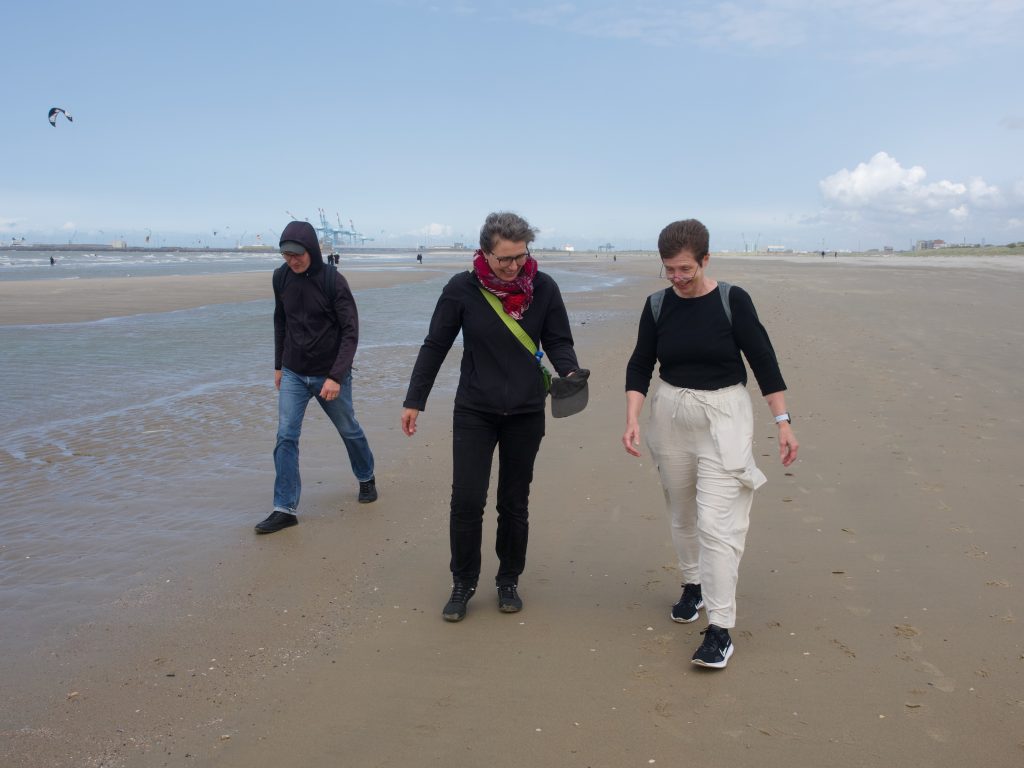
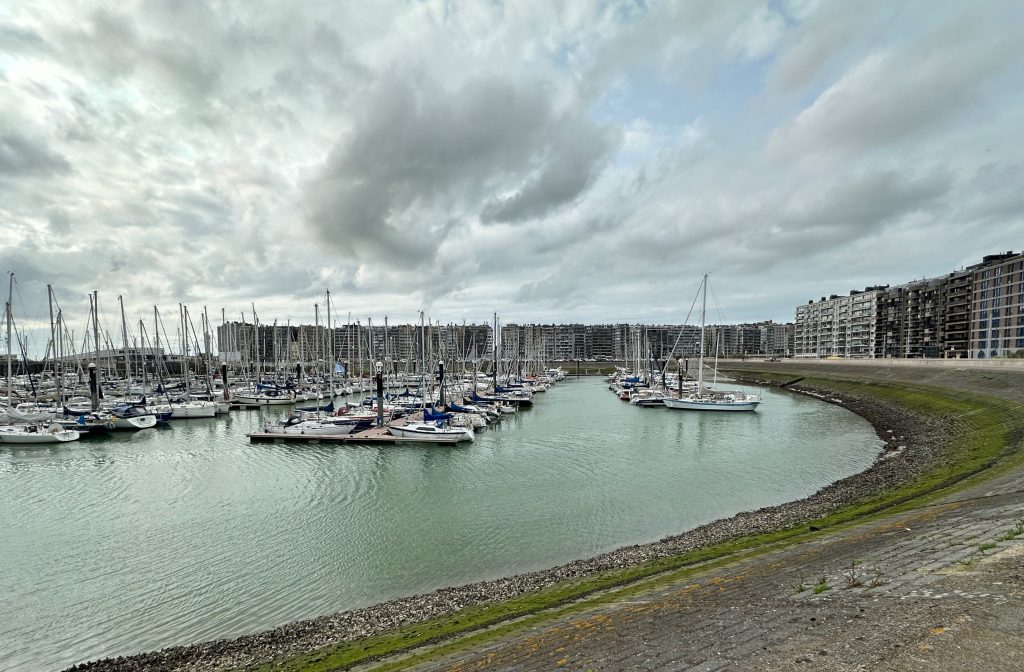
We got back to the hotel about 6:30, had our salads; the others all had a Belgian beer (Jupiler, which I always thought was “Jupiter”!) and we had a wonderful, relaxing time, but decided to all make it an early night and not venture back out. More adventures tomorrow!